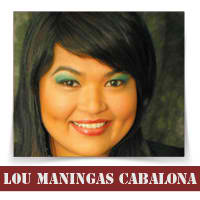
By: Lou Maningas Cabalona
Last May 11, PBS premiered a 5-part documentary series entitled Asian Americans in celebration of Asian Pacific American History Month (APAHM). The docu series delivers a bold perspective on history that matters today, more than ever amid rising Anti-Asian sentiment and racist acts because of the COVID-19 pandemic.
It offers a fresh perspective on the long history of a Asian Americans in the US, their struggles and their resilience through remarkable stories of individuals who fought to be seen as more than foreigners in the country they call home, as told by their descendants, American scholars, historians and artists. Here is a glimpse of some of these stories, captured in photos, that helped shape the America we live in. Catch the series online through June by going to pbs.org/AsianAmericans

Antero Cabrera with weapon as Igorot villager in the Living Exhibits at 1904 St Louis World’s Fair. The inscription on the photo reads “Ba-Longlong (Antero) – who reads and writes in English”. He was taken in at 12 years old by anthropologist Albert Ernest Jenks as an interpreter. He returned to the United States a number of times, as part of performing troupes as well as on exhibit at the 1905 Lewis and Clark Exhibition, and the Alaska–Yukon–Pacific Exposition in Seattle in 1909 until he finally settled in the USA with his family.
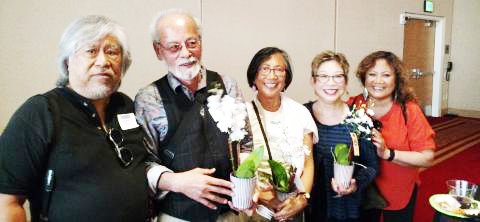
Back in the 60s, Dan Gonzales was of one of students who were part of the Third World Liberation Front (TWLF), a coalition of Blacks, Latinos, and Asians student organizations at San Francisco State University. They initiated the TWLF strikes of 1968, one of the longest student strikes in US history demanding the formation of a college of Ethnic Studies. “The history is connected to not only how we see ourselves but how others see us,” Gonzales, now a fully tenured professor of Asian American Studies at SFSU, told diverseeducation. com. “It wasn’t just about us studying ourselves. The purpose was to provide a forum and a series of learning experiences that could educate anyone interested in understanding the conditions that people of color face in American society and also having interest in participating in the process of building a more just America, a fairer society.” Pictured here are faculty and original TWLF strikers (fr left to right) Dan Gonzales, Ben Kobashigawa, Juanita Tamayo-Lott, Laureen Chew, Linda Gonzales (Credit: aas.sfsu.edu)
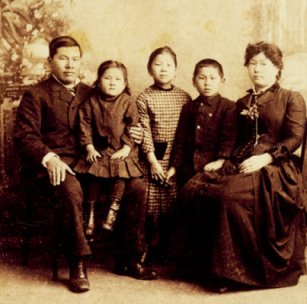
Portrait of the Tape family in 1884. Joseph Tape (1852–1935), and Mary McGladery Tape (1857–1934), were both immigrants from China. Joseph Tape was a businessman and an interpreter for the Chinese consulate, while Mary Tape was an amateur photographer and artist. In the California Supreme Court case Tape v. Hurley, the Tape family successfully won the right for their US born daughter Mamie to attend public school, which was a major civil rights victory for Chinese American immigrants. (Credit: Smith Collection/ Gado/Getty Images)
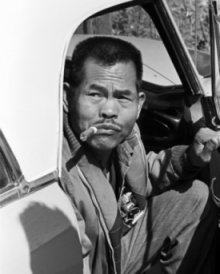
Larry Itliong, arriving at an Agricultural Workers Organizing Committee (AWOC) meeting in California’s Central Valley in the early 1960s; On September 8, 1965, Filipino American grape workers, AWOC members, led by Itliong, walked out on strike against Delano-area table and wine grape growers protesting years of poor pay and work conditions. He encouraged Cesar Chavez, who led a mostly Latino farm workers union, the National Farm Workers Association, to join their strike. This was the beginning of the United Farm Workers labor union. As part of their tactics, they asked Americans to boycott grapes in support of their cause. In 1970, after five years, farm workers won a contract promising better pay and benefits. A few years later, their efforts led to the passage of the California Agricultural Labor Relations Act of 1975, which established collective-bargaining power for farmworkers statewide. (Credit: George Ballis / Take Stock / TopFoto)
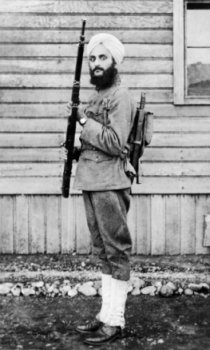
Bhagat Singh Thind as a young man, Camp Lewis 1918 (WWI). Thind, a Sikh American, was the first U.S. serviceman allowed to wear a turban as part of military uniform for religious reasons. As an Indian National who was categorized as Caucasian, Thind’s appeal for US Citizenship opened the question of what It really means to be “white”? He was granted this 3rd and final US Citizenship in 1936, twenty-three years afterf he first emigrated (Credit: Courtesy of the Dr. Bhagat Singh Thind Spiritual Science Foundation)
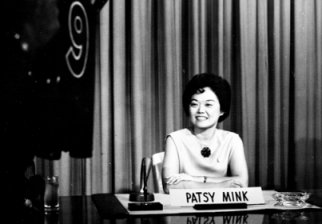
Third generation Japanese American and Hawaii native, Patsy Mink was responsible for a lot of firsts for Asian Americans and for women of color. When she was refused the right to take the bar examination, due to the loss of her Hawaiian territorial residency upon marriage, Mink challenged the sexist statute. She won, passed the bar exam in 1953, and established a solo practice to become the first Japanese-American woman to practice law in the Territory of Hawaii. Three years later she was elected to Hawaii’s Territorial Legislature, and a couple of years after, to its Senate. Six years later, in 1964, she made history when she became the first Asian-American woman (and first woman of any ethnic minority) elected to the US Congress, entering the House of Representatives, where she remained until 1977.
 VIA Times – June 2020 Issue Vital News, Vibrant VIews for Asian Americans in Chicago & Midwest
VIA Times – June 2020 Issue Vital News, Vibrant VIews for Asian Americans in Chicago & Midwest

